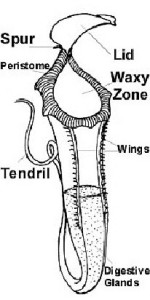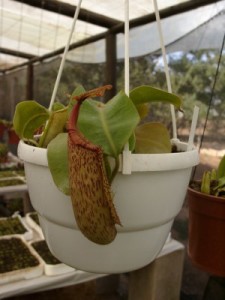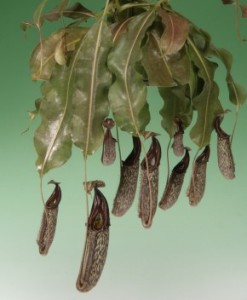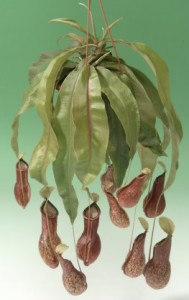The genus Nepenthes (Monkey Cup or Tropical Pitcher plant) is one of the most fascinating of all carnivorous plants. Currently almost 100 species are accepted scientifically, most of them from Borneo, Sumatra and the Malaysian region. The climbing vines of Nepenthes produce a modified form of leaf called a “pitcher” hence the common name “Tropical Pitcher plant”. The size of the pitcher varies and some species are large enough to hold up to two litres of water! The name “Monkey Cup” arises from the fact that monkeys have been seen to drink water from them in the rainforests. The pitchers are not simply water reservoirs for the plant in times of drought, as the first European observers assumed. They are actually highly complex passive insect traps, which secrete and absorb a mild to very acidic digestive fluid that contains many as yet undetermined compounds. Insects are attracted to the traps because of nectar secretions and coloration. The slippery rim and inner walls of the pitcher encourage insects to fall into the digestive fluid at the bottom of the trap. Nutrients are absorbed from this “soup.” The variation in pitcher colour and shape is what most interests exotic plant enthusiasts and the horticultural trade. The wonderful hanging pitchers of Nepenthes attract attention wherever they are found. They generally like bright light without much direct sun so they can be grown in a greenhouse, sun room, in a partly sunny window or under lights. They need similar conditions to most Orchids, so if you are already growing Orchids in a greenhouse, then Nepenthes should thrive in there too.





